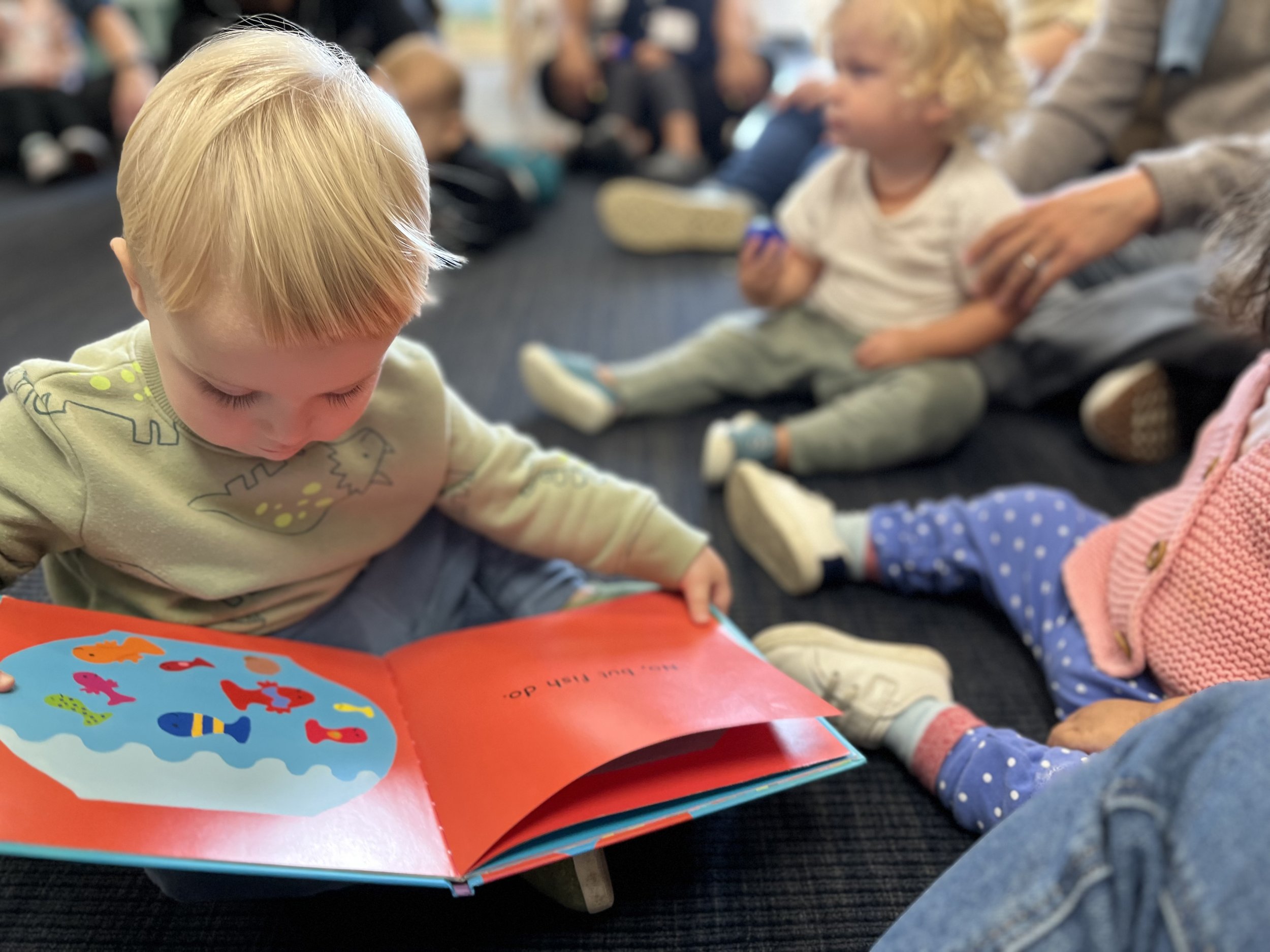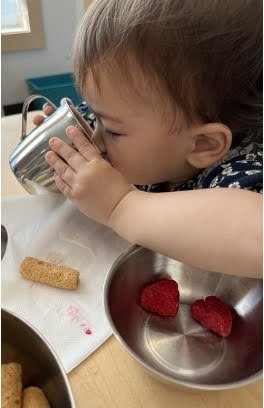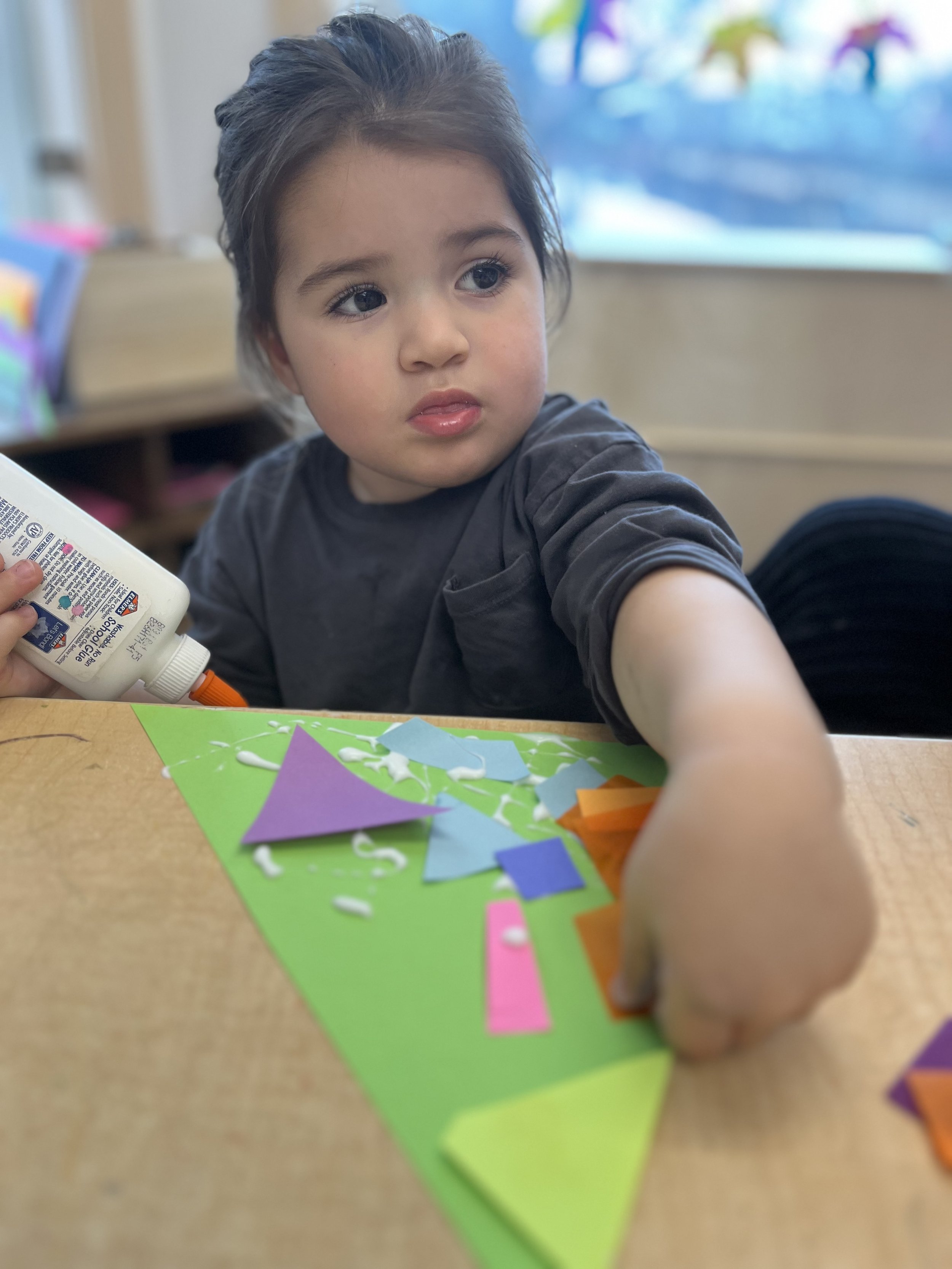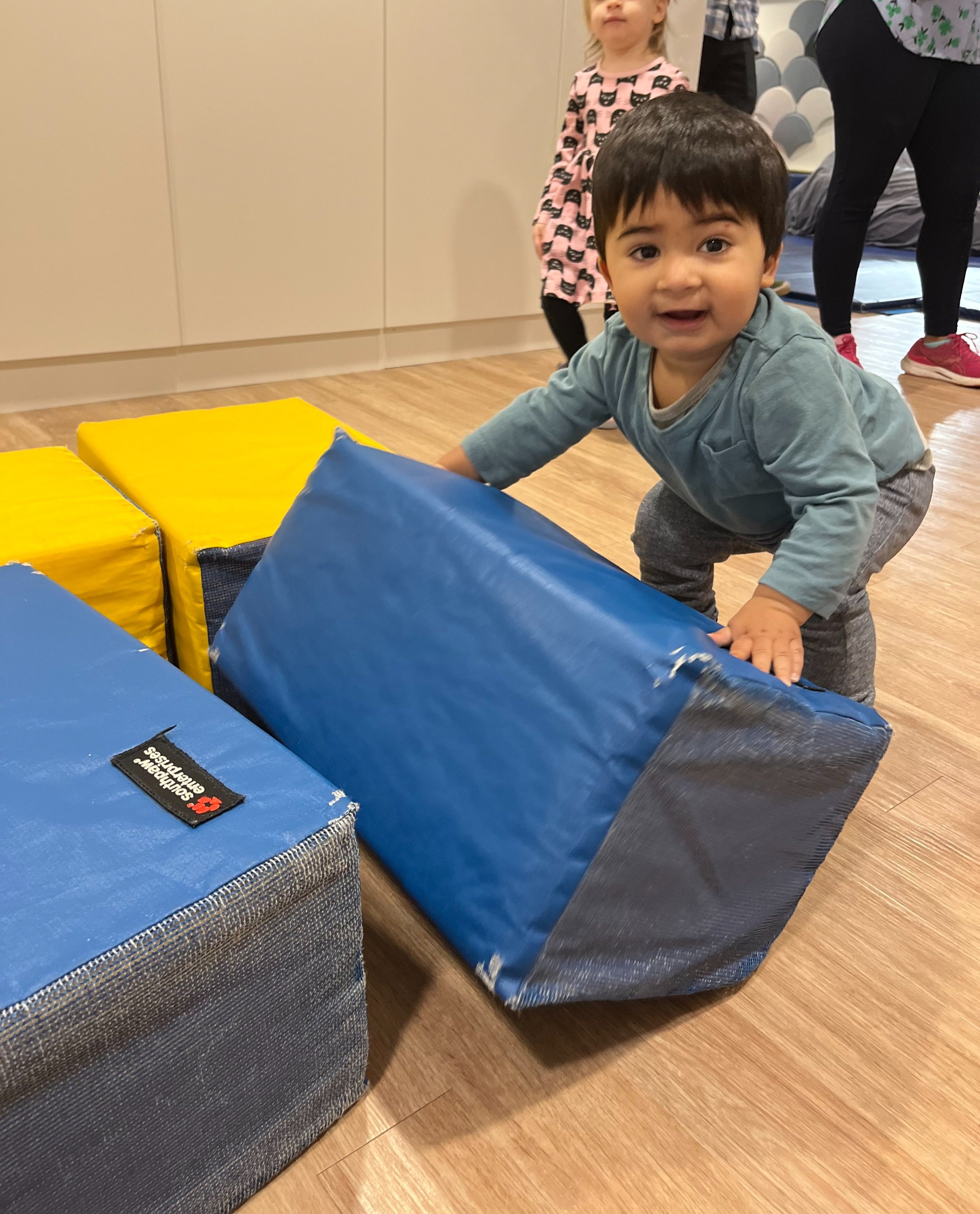This is a classroom newsletter recently shared by our Tots 1 team. Enjoy this glimpse into our Tots program!
What a fun age 18-30 months is! We truly delight in seeing your child’s personality develop through the weeks and watching them become more confident in their actions at school. A major piece of children’s development at this time is the emergence of autonomy as they begin to understand their individuality as their world becomes increasingly complex. Autonomy is defined as a state of independence and self-determination – and boy, do some of your children express that independence! But of course, we know that children exploring autonomy continue to refer to and rely on their trusted adults for guidance, assurance, and to set boundaries. A child who feels capable and safe in their relationships is a child who can take good risks and recover in the face of disappointment. We’d like to share a few of our observations of children exercising their autonomy at school, as well as a few ways you can foster their desire for more autonomy and independence at home.
Snack Time
Many children are beginning to demonstrate their emerging autonomy and sense of self-capability when serving themselves during snack time at school by using scoops and tongs, pouring their own water, and putting their dishes and garbage in their places when they’re finished. These are all ways children are utilizing their growing skills (to name a few: fine motor control, one-to-one correspondence, volume and weight, societal expectations of table etiquette!) to build competency and competence in a safe space designed with children’s autonomy and accessibility in mind. Learning to feed oneself is not only a satisfying accomplishment for a young child but also a necessary and functional life skill that lays a strong foundation for positive self-care habits throughout development.
We encourage you and your caregiver to support your child in serving themselves - if they do not initiate, invite them to try to use the serving utensils, pour their own water (we only put a little in the pitcher to make it manageable), and/or clean up after themselves. They will likely need your help, but warmly encourage them to keep trying while resisting the urge to provide more than minimal assistance. Remember - spills are a vital (and inevitable) part of the process!
Free Play Time
At play time children are exerting their independence and finding autonomy as they move freely throughout the classroom to self-select which materials they will explore next. Providing a play space with choices allows children to find what feels right for them, and gives them the opportunity to experiment with and enjoy what they’ve chosen for themselves for an extended period of time. When setting up play spaces to foster autonomy, we find it beneficial to offer just a few curated choices designed in an appealing, accessible way to prevent sensory overwhelm and reduce the need for adult intervention.
Many children have tried the variety of sensory materials offered – some materials are more familiar, like play dough, and children dig right in, whereas others, like kinetic sand and shaving cream, have entirely different properties and feature novel textures. Just as it is for us adults, gearing up to try something new can take time! Our independent thinkers are using their discerning judgment and observation skills to decide when and if they would like to engage in a new sensory experience. When (or if) they choose to engage, they are often delighted to impress designs upon playdough, or to create new color shades in shaving cream. They have been using their fine motor skills to squeeze the glue bottle in just the right place and then carefully place the next piece of tissue paper on the spot of glue. For those who discover they dislike the stickiness of glue on their hands, they are learning with experience that it can be easily wiped off or will simply dry quickly.
We recognize the children’s autonomy in small ways by honoring their choice to touch shaving cream and in how long they want to wash babies. In a world where children are permitted so few choices, school is a crucial space for them to make their own decisions!
We have noticed a common interest across our class: vehicles. To honor this interest we’ve created play spaces featuring trains, cars, trucks, and boats on the rug, atop the table by the window, in the gym, and in the sand and water tables. We even painted with cars a few weeks ago! Vehicle play offers children more than just a theme, however. We observe how the children have been working hard to hook trains together, connect train tracks and roads, identify road signs, and negotiate with the other drivers on the track/road.
Gym Time
Our sessions always begin in the gym, where the children can warm up to the environment and peers by using big body movements and through expressing emotion. The children have learned that the gym is a place where they can move their body in a unique way and try out new, often challenging, physical feats. They can build with big squishy blocks and lift them themselves! They can decide to go down the slide, try out the climbing wall, crash into the pillows, or scale the ladder. These are all bold opportunities in which children are utilizing their autonomy!
Group Time
During group time children are beginning to follow along with the motions of songs and now know that the Monkey first claps his hands and then cues a different action. They follow along and tap their toes, jump up and down, and wave goodbye at the end. They know what to do and they can show it! We also hear children make requests for specific songs, which signals to us their personal preferences about how we spend our time together.
At Home
At home your child may be picking out their own clothes, deciding which foods they do and do not want to try, and, of course, choosing what toys to play with. Although these may seem like small actions, they are promising signs of budding autonomy in your tot. We encourage you to give your child the space and time to flex that autonomy, and to say ‘yes’ when they want to wear the striped pants with the flower shirt. It often takes a little longer and can be a bit messier, but you will be helping to build their confidence and sense of self as they grow into a young person who is comfortable in their own skin and in expressing their own ideas.
You can also help boost your child’s sense of autonomy by giving them special ‘jobs’ to do to help out. Perhaps you might invite them to help wipe up spilled water or to pour the dog’s food in his dish at dinnertime. These simple but essential tasks bring children a sense of accomplishment and helps them to recognize that they are a valuable and interconnected member of the family whose contributions matter.
We can’t wait to see what your child discovers they can do on their own next and we look forward to helping them make more and more of those discoveries at school over the coming months.
Warmly,
Ashley & Kalei








